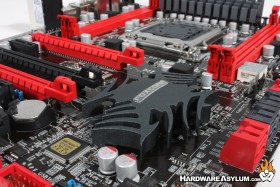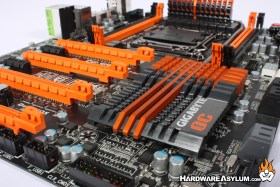The Illusion of Overclocking Support
Author: Dennis GarciaSupport for Overclocking
Overclocking isn’t new and while most of you associate overclocking with super expensive hardware and exotic cooling methods it actually started as a way to extend the life of lower end hardware. The problem was there were limits to what this older hardware could support which, in turn, limited what you could do. Most of the time these limits were based around physical components such as the clock generator, over voltage controls, over current protection, etc. These limits were done to prevent the hardware from being damaged which required board modifications to circumvent.
Much like with Case modding and Water cooling the hardware manufacturers starting to build specially designed components for gaming and overclocking. Some even went so far as to create special divisions *cough* DFI LanParty */cough* dedicated to pushing the limits. I’d like to say that started a bit of industry competition to see who would be the best.
When it comes to support for overclocking there are several factors to consider.
- Manufacturers giving back to the community by building stuff they want.
- End user support for the company building the hardware to keep them engaged.
- Community engagement by the hardware manufacturer.
These points are in numerical order for a reason. The top two are basically what is occurring in the market place right now with specialized hardware. The final point is what I would like to explore since this is the disconnect between what a hardware maker does to support the overclocking community and how far they are willing to go to take advantage of their efforts.
Does the hardware maker support what they do when it comes to overclocking? I think an accurate assessment would be, yes and no. Sure, you can buy an overclocking motherboard from company X or a feature packed gaming motherboard from company Y. Yet actually purchasing these products may be limited by overall cost or worst, availability. It is no secret that margins on motherboards are extremely small and most companies make their money by selling products in volume. This isn’t a reflection of accurate pricing but rather competition for sales from a market unwilling to “pay too much”. Combine that with additional R&D costs and you can see why they may want to limit how many they produce.
The problem is, these companies market themselves using the high-end products in hopes that the interest will prompt buyers to look down the list and find something that will match their needs. In a way they are using “our” hobby to market their products while not bothering to produce enough products to support “our” market.
Along the same lines there are some instances where hardware makers release special editions of products claiming that it will do these amazing things and yet don’t provide the tools required to make it happen. Instead they go the route offering special versions of the tools to their partners with safeguards in place to ensure they don’t get passed around.
In most cases most hardware makers are doing their hardware offerings correctly while others are taking the “me too” approach and only releasing special products because they think they have to. Sadly this is perpetuating the illusion of overclocking support to the public with no real desire to improve or make their investment work for them.



